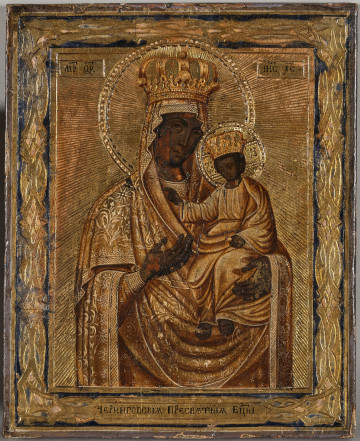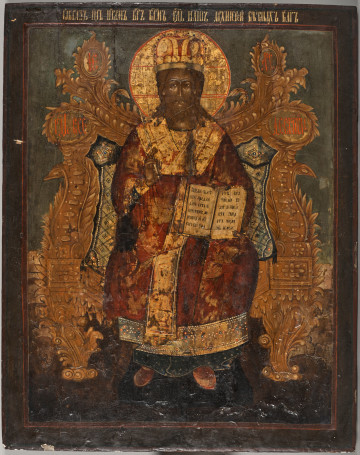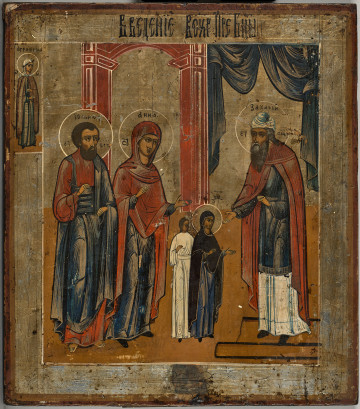
The Mother of God of Hodigitria
19th (?) century
Castle Museum in Łańcut
Part of the collection: Ikony
Saint Basilissa came from Nicomedia; she became a Christian martyr during the reign of the emperor Diocletian. In Byzantium, her name initially meant ‘wife of the ruler’ - basileus; among Christians it was used as a proper name, the female equivalent of Basil. Many Christian women by this name are mentioned during the time of persecution without detailed information about them. The most well-known Greek text containing the ‘bios’ or ‘life’ of Basilissa of Nicomedia was written by the Byzantine theologian, philosopher, and historian Nicephorus Gregoras, who lived in the 14th c., when the cult of the saint was widespread in Constantinople. In the lands of Rus, the author of a text about Basilissa was the Russian Orthodox bishop and metropolitan Dimitry of Rostov - theologian and preacher who lived in the second half of the 17th c. A nine-year-old girl, unwilling to make sacrifices to pagan idols, was tortured by the prefect Alexander; beaten and hanged upside down over a fire exuding poisonous sulfur fumes, she was thanking Christ for her suffering. Her fervent faith and prayer miraculously saved her, even after she was thrown into the fire and given to starving lions. Amazed at the miracles and the effectiveness of her prayer, the prefect Alexander converted, and released Basilissa; he died soon after and was buried as a Christian. Released, Basilissa left Nicomedia; after going out of the city, tormented by thirst, she set her foot on a stone from under which water sprang. Then, entrusting herself to God in prayer, she died in 309 and was buried near the miraculous spring. Saint Basilissa is considered particularly effective in praying for those falling away from faith. Her day is celebrated on the 16th of September (3rd of September in the Julian calendar) and her popularity in the lands of Rus contributed to the creation of numerous icons and the spread of the name Vasilissa. Teresa Bagińska-Żurawska https://orcid.org/0000-0002-9243-3967
Dimensions
height: 66.5 cm, width: 40 cm
Object type
Icons
Technique
oil
Material
oil-based paint, canvas
Origin / acquisition method
decyzja administracyjna
Creation time / dating
Creation / finding place
Owner
Castle Museum in Łańcut
Identification number
Location / status

19th (?) century
Castle Museum in Łańcut

1800 — 1850
Castle Museum in Łańcut

1800 — 1899
Castle Museum in Łańcut
DISCOVER this TOPIC
National Museum in Lublin
DISCOVER this PATH
Educational path